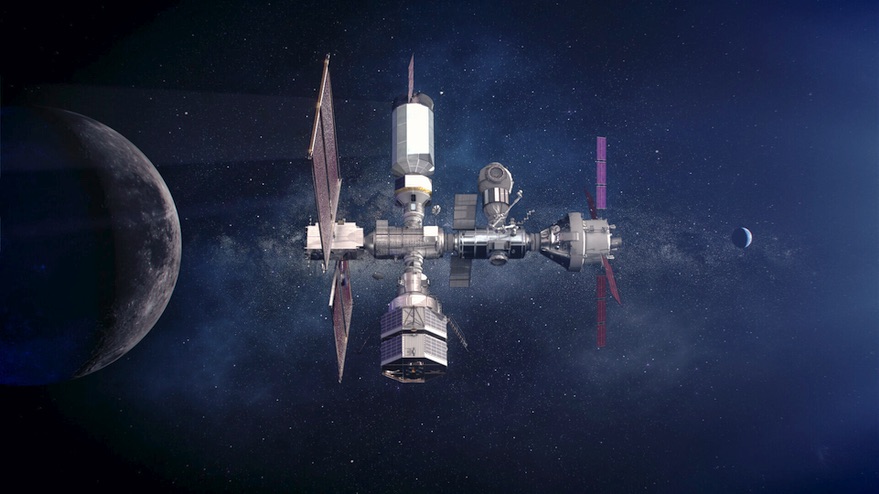Products You May Like
WASHINGTON — NASA and the Japanese government have completed an agreement outlining Japan’s contributions to the lunar Gateway as NASA works to wrap up international contributions to the outpost.
NASA announced Jan. 12 it signed an agreement with the Japanese government governing Japan’s contributions to the Gateway. They include components for the European-led International Habitation, or I-Hab, module, such as its environmental control and life support system, batteries, thermal control and cameras.
In addition to its I-Hab contributions, the Japanese space agency JAXA will provide batteries for the Habitation and Logistics Outpost (HALO) module being built by Northrop Grumman, which will launch with the Power and Propulsion Element as the first components of the Gateway in late 2023. JAXA will also investigate modifications to its next-generation HTV-X cargo resupply spacecraft to allow it to support the Gateway.
“The capabilities provided by Japan are critical to enabling the interior environment of the Gateway allowing our crews to live and work for longer durations,” Dan Hartman, NASA Gateway program manager, said in an agency statement. “With the life support systems from Japan, longer duration missions for the Artemis crews can be accomplished with reduced demands on logistics resupply.”
The Japanese contributions to the Gateway are in line with past discussions about its role in the lunar outpost. At an event a year ago, JAXA officials discussed providing components for HALO and contributing to a habitation module, as well as using HTV-X for cargo resupply. NASA and Japan signed a “Joint Exploration Declaration of Intent” in July 2020 that outlined Japanese roles in the overall Artemis program.
Japan joins Canada and Europe as NASA’s international partners in the lunar Gateway. NASA announced Oct. 27 a memorandum of understanding (MOU) with the European Space Agency, where ESA agreed to build the European System Providing Refueling, Infrastructure and Telecommunications (ESPRIT) element and I-Hab as well as produce additional Orion service modules. NASA and the Canadian Space Agency signed an agreement Dec. 16 confirming Canada’s contribution of the Canadarm3 robotic arm.
“Strengthening our international partnerships and commitments to Artemis puts humanity on a solid path to achieve our common goals of sustainable lunar exploration by the end of this decade,” NASA Administrator Jim Bridenstine said in the release about the Japanese agreement.
The Canadian Space Agency agreement included specific plans to fly Canadian astronauts, including one on the first crewed Artemis mission, Artemis 2, with a second on a later, unspecified mission. The ESA agreement includes three “crew opportunities” to the Gateway, NASA said in October.
The agreement with Japan “also marks NASA’s intent to provide crew opportunities for Japanese astronauts to the Gateway,” NASA said in its statement, subject to future discussions and a later agreement.
The agreement with Japan largely completes international arrangements, based on the existing intergovernmental agreement for the International Space Station, involving development of the lunar Gateway. Those agreements make it less likely that the next administration will significantly alter the Gateway program, even as it makes changes to other aspects of Artemis, such as postponing crewed missions to the lunar surface.
The remaining ISS partner, Russia, has yet to commit to the Gateway. Dmitry Rogozin, director general of Roscosmos, said in October that the Gateway was “too U.S.-centric” for him. “Russia is likely to refrain from participating in it on a large scale.”
Bridenstine said at the time that NASA has tried to work with Roscosmos on an agreement similar to those with Canada, Europe and Japan. The agency sent Roscosmos a draft MOU in February 2020 seeking comments, but as of October had yet to receive a response.
However, the agreement between NASA and Japan does leave open the possibility of a Russian role on the Gateway. The agreement lists the contributions of the various partners, which include a “crew airlock” from Roscosmos that would be delivered in 2028.
